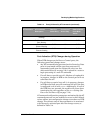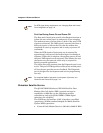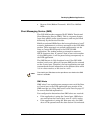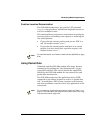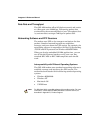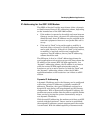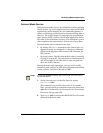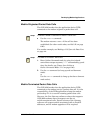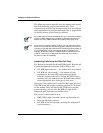
Developing Modem Applications
80-99208-1 Rev. D 5-23
IP Addressing for the GSP-1620 Modem
The OEM or Service Provider must choose either a dynamic
or fixed Internet Protocol (IP) addressing scheme, depending
on the intended use of the GSP-1620 modem:
• If the modem is expected to be mobile and roam between
Gateway service areas, a dynamic IP addressing scheme
should be used. A new IP address may be assigned to the
terminal equipment whenever a new packet data call is
set up.
• If the unit is “fixed” in its position and no mobility is
involved, either a dynamic or fixed IP addressing scheme
can be used. However, if the unit is “fixed” in its position,
no mobility is involved, and the user’s application
requires a fixed IP address, then a fixed IP addressing
scheme should be used.
The difference is that in a “fixed” addressing scheme the
user’s application at a host site or server will always know the
IP address of the remote DTE (SCADA application). In a
“dynamic” addressing scheme, the IP address is not known
until the remote SCADA application/modem and the
host/server are in an active session. In both the “fixed” and
the “dynamic” addressing scheme, either the SCADA
application/modem or the host/server can initiate a call/IP
session.
Dynamic IP Addressing
A dynamic IP address pool in the Gateway can be configured
with either private IP addresses or globally routable IP
addresses. Therefore, the type of IP address assigned to a
dynamic IP user during call setup depends on the Gateway
configuration. With a dynamically assigned IP address, the
modem can roam to another Gateway and re-establish Packet
Data service by having the system automatically assign a
new dynamic IP address.
With dynamic IP addressing, the modem can initiate a call/IP
session with the host/server. Once a session is established,
the assigned IP addresses remain constant until the session
is terminated. With the added capability of dormant mode



